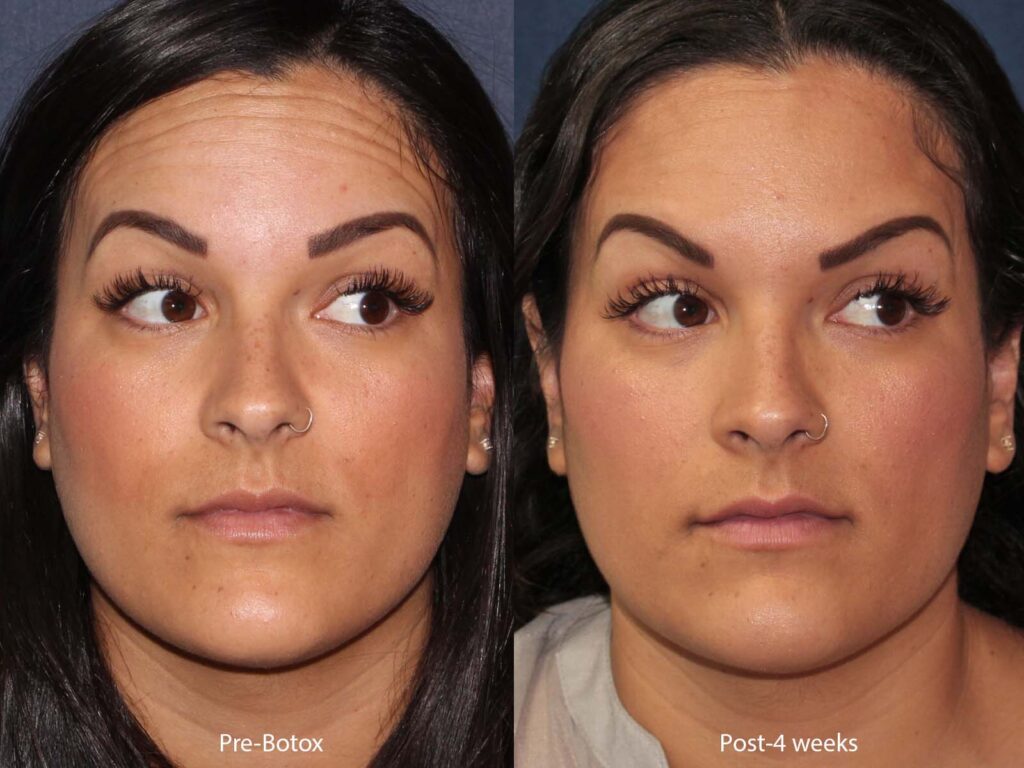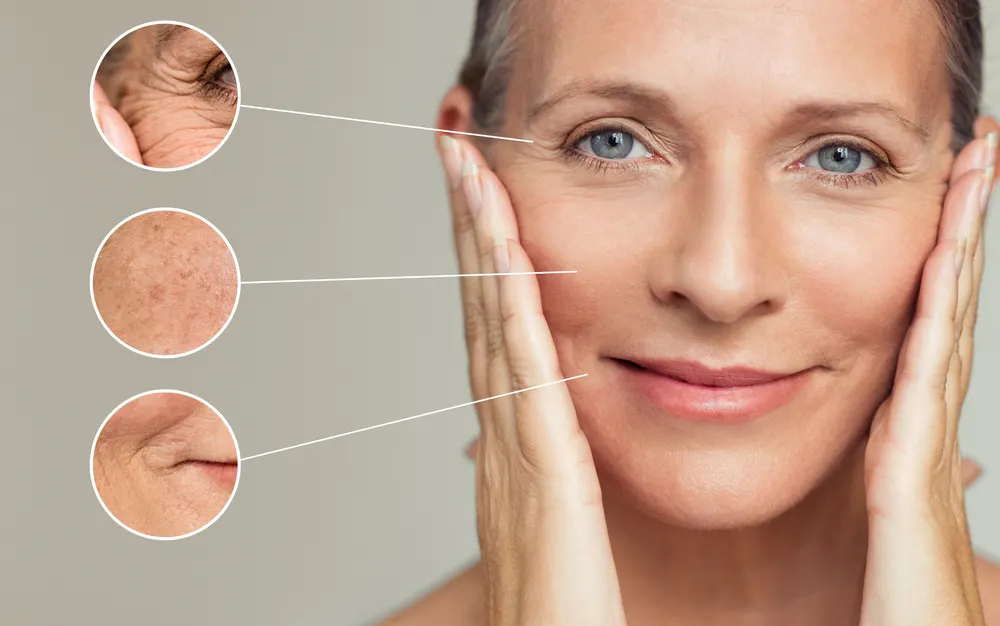
Wrinkles are a natural part of the aging process, but that doesn’t mean you have to accept them without a fight. Whether you’re looking to reduce the appearance of fine lines, prevent deeper wrinkles, or simply keep your skin youthful for as long as possible, there are numerous effective treatments available. In this comprehensive guide, we’ll explore the most effective treatments to reduce wrinkles, backed by science and expert advice. From topical skincare to advanced cosmetic procedures, there’s something for everyone.
Understanding Wrinkles: Why They Appear
Before diving into treatments, it’s important to understand why wrinkles form in the first place. As we age, our skin undergoes a variety of changes. Collagen and elastin, proteins responsible for skin firmness and elasticity, naturally decline over time. This leads to sagging and the formation of lines and wrinkles. Other factors, such as sun exposure, environmental pollutants, smoking, and poor skincare habits, can accelerate the process.
The Main Types of Wrinkles:

-
Dynamic Wrinkles: These occur due to facial muscle movement, such as smiling or frowning.
-
Static Wrinkles: These are visible even when your face is at rest and are typically caused by the loss of collagen and elastin.
1. Topical Treatments for Wrinkle Reduction
Retinoids: A Proven Anti-Aging Powerhouse
One of the most effective treatments for reducing wrinkles is the use of retinoids, a class of compounds derived from Vitamin A. Retinoids promote skin cell turnover, stimulate collagen production, and reduce the appearance of fine lines and wrinkles.
How it Works:
Retinoids work by increasing cell turnover, which means older, dead skin cells are replaced with fresher, younger skin. Over time, they can help to smooth out wrinkles and improve skin texture. Retinoid-based products like retinol and tretinoin have been extensively studied and shown to significantly reduce the signs of aging.
Usage Tips:
-
Start with lower concentrations (0.25% to 0.5%) to avoid irritation.
-
Apply at night as retinoids can increase skin sensitivity to the sun.
-
Always follow up with sunscreen during the day.
Peptides: Enhancing Skin’s Repair Mechanism
Peptides are short chains of amino acids that play a crucial role in building proteins like collagen and elastin. Many anti-aging creams and serums contain peptides to boost skin repair and reduce wrinkles.
Benefits of Peptides:
-
They help promote the production of collagen, reducing fine lines.
-
They also aid in improving skin hydration, elasticity, and smoothness.
Hyaluronic Acid: A Moisturizing Miracle
Hyaluronic acid is a naturally occurring substance in the body that holds moisture in the skin. As we age, our skin loses its ability to retain moisture, which can contribute to the formation of wrinkles. Hyaluronic acid-based moisturizers and serums can help plump the skin and reduce the appearance of fine lines.
How it Works:
Hyaluronic acid attracts moisture from the environment, giving your skin a smoother, more hydrated appearance. It works well when used in combination with other anti-aging ingredients like retinoids.
2. Non-Invasive Cosmetic Procedures
For those looking for more immediate and noticeable results, non-invasive cosmetic procedures offer a way to target wrinkles effectively without the need for surgery.
Botox: A Quick Solution to Dynamic Wrinkles
Botulinum toxin (Botox) is one of the most popular treatments for wrinkles caused by facial muscle movement, also known as dynamic wrinkles. Botox works by temporarily paralyzing the muscles responsible for causing wrinkles, such as those around the eyes and forehead.
Benefits of Botox:
-
Quick procedure, with minimal downtime.
-
Results typically last for 3-6 months.
-
Highly effective for crow’s feet, frown lines, and forehead lines.
Dermal Fillers: Restoring Volume to the Skin
As we age, our skin loses volume, leading to the formation of static wrinkles. Dermal fillers are injectable substances used to restore lost volume and smooth out wrinkles. Fillers can be used to target deeper wrinkles around the mouth, nose, and cheeks.
Popular Dermal Fillers:
-
Hyaluronic Acid Fillers (e.g., Juvederm, Restylane): These are the most common fillers, providing natural-looking results.
-
Calcium Hydroxylapatite Fillers (e.g., Radiesse): These fillers stimulate collagen production in addition to providing volume.
Laser Treatments: Revitalizing the Skin’s Surface
Laser treatments, such as fractional CO2 and erbium lasers, work by removing damaged skin cells and stimulating collagen production beneath the skin’s surface. These treatments are highly effective for reducing the appearance of wrinkles, particularly around the eyes, mouth, and on the neck.
Types of Laser Treatments:
-
Fractional CO2 Lasers: Known for their ability to treat deeper wrinkles.
-
Erbium Lasers: Often used for less aggressive resurfacing, ideal for fine lines.
Benefits of Laser Treatments:
-
Improves skin texture and tone.
-
Reduces deep wrinkles and fine lines.
-
Results can last for months, with minimal recovery time.
3. Lifestyle Changes to Prevent Wrinkles
While treatments can help reduce existing wrinkles, preventive measures can help slow down the aging process and prevent new lines from forming. Here are a few lifestyle changes that can help keep your skin youthful.
1. Use Sunscreen Daily
Sun exposure is one of the leading causes of premature aging. UV rays break down collagen and elastin fibers in the skin, leading to wrinkles and sagging. Using a broad-spectrum sunscreen with an SPF of at least 30 daily can help protect your skin from UV damage and prevent new wrinkles from forming.
2. Stay Hydrated
Dehydration can make your skin look dull and accentuate the appearance of wrinkles. Drinking plenty of water and using hydrating skincare products can help maintain a youthful glow.
3. Quit Smoking
Smoking accelerates the breakdown of collagen and elastin, leading to premature wrinkles. By quitting smoking, you can significantly reduce your risk of developing wrinkles around the mouth and eyes.
4. Get Enough Sleep
Sleep is essential for skin repair. During sleep, your body produces growth hormones that help repair skin cells and maintain healthy collagen levels. Aim for 7-8 hours of quality sleep each night to keep your skin looking fresh.
4. Advanced Surgical Treatments
For those seeking permanent results, surgical options are available, though these come with higher costs and longer recovery times.
Facelift Surgery
A facelift is a surgical procedure that tightens the skin, removes excess skin, and restores a youthful appearance to the face. This is one of the most effective treatments for deep wrinkles, especially for individuals with significant sagging.
Benefits of a Facelift:
-
Long-lasting results (typically 10-15 years).
-
Can dramatically reduce deep wrinkles and sagging.
-
Customizable to each patient’s needs.
Brow Lift Surgery
A brow lift addresses sagging skin on the forehead and around the eyebrows, which can contribute to forehead lines and wrinkles. This surgery can be done using several techniques, including traditional, endoscopic, or minimally invasive methods.
Benefits:
-
Can smooth out forehead wrinkles.
-
Lifts drooping eyebrows for a more youthful appearance.
Conclusion
There are many effective treatments to reduce wrinkles, ranging from topical skincare products like retinoids and hyaluronic acid to advanced non-invasive procedures like Botox and dermal fillers. Whether you’re looking for a quick fix or long-term results, there are numerous options to suit your needs and preferences. By combining these treatments with lifestyle changes such as sunscreen use, hydration, and quitting smoking, you can significantly slow down the formation of wrinkles and maintain a youthful appearance.
Remember, it’s always a good idea to consult with a dermatologist or a skincare professional before starting any new treatments to ensure the options you choose are right for your skin type and concerns.
